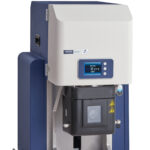Originating in America, Lacrosse has become a popular growing sport in the UK and has become increasingly technologically advanced over the years by joining the revolution of carbon fibre.
Lacrosse stick shafts were originally constructed with wood but have evolved over the years and are now made from carbon fibre materials to improve production and performance.
The first Lacrosse sticks were simply made of wood and had a small area in which to hold the ball, it wasn’t until the late 18th century that the wooden sticks we recognise today were introduced.
These sticks featured what is now called the pocket. The pocket was traditionally strung with leather strings but in the 1980s mesh laces were introduced to once again improve performance with a lighter feel. The mesh also proved to be much more resilient in rough weather conditions.
In 1937 the first major advancement of the Lacrosse stick was achieved when Robert Pool introduced the ‘double wall’ which made the stick sturdier, making handling the ball much easier in which the Southeastern tribes (Cherokee, Choctaw, Chickasaw, Creek, Seminole, and Yuchi) played with. In 1970, the brand STX, still around today in Maryland, US, patented the first plastic moulded head, making it lighter and easier to manoeuvre than their wooden counterparts.
The Lacrosse shaft continued to evolve after the development of the new head. Aluminium alloy shafts were introduced in 1973 by STX as they were much lighter than wood for players to cradle and shoot. The lightweight material is not as strong as other metals and can be damaged easily. Perfect for first time players this shaft is versatile and easy to use.
Scandium (a chemical element) shafts feature the highest strength-to-weight ratio with extreme durability and were made to be the strongest yet lightest shaft around suitable for defense – until the development of carbon fibre.
Carbon fibre takes the lead
Advances in material science have caused a decline in the popularity of titanium shafts as the modern day Lacrosse stick is made from carbon fibre composites. Companies such as Epoch, a world leader in carbon fibre Lacrosse shaft, use carbon fibre technology, as it makes the shafts more durable, flexible and lightweight. They are also easy to grip and adapt to changes in climate, making it the most popular choice of stick today. Zyvex technologies produced an advanced carbon fibre material called Arovex to enhance the strength and lightweight feel Lacrosse shafts. C-12 Lacrosse is working together with Zyvex to incorporate the innovative line of advanced composites into their shafts including carbon nanotubes and grapheme. The innovation of carbon fibre has resulted in a faster and more competitive game to modern day Lacrosse. Lacrosse sticks can be customised to individual players as separate heads and shafts can be purchased for the elite players to gain full potential from their sticks.












